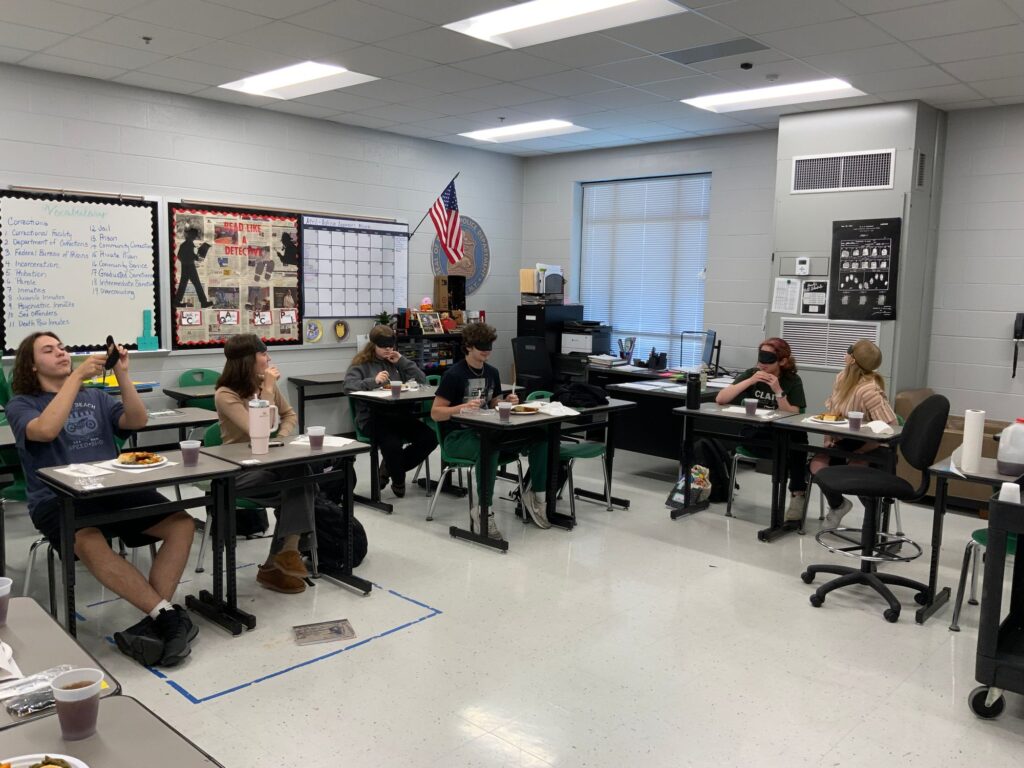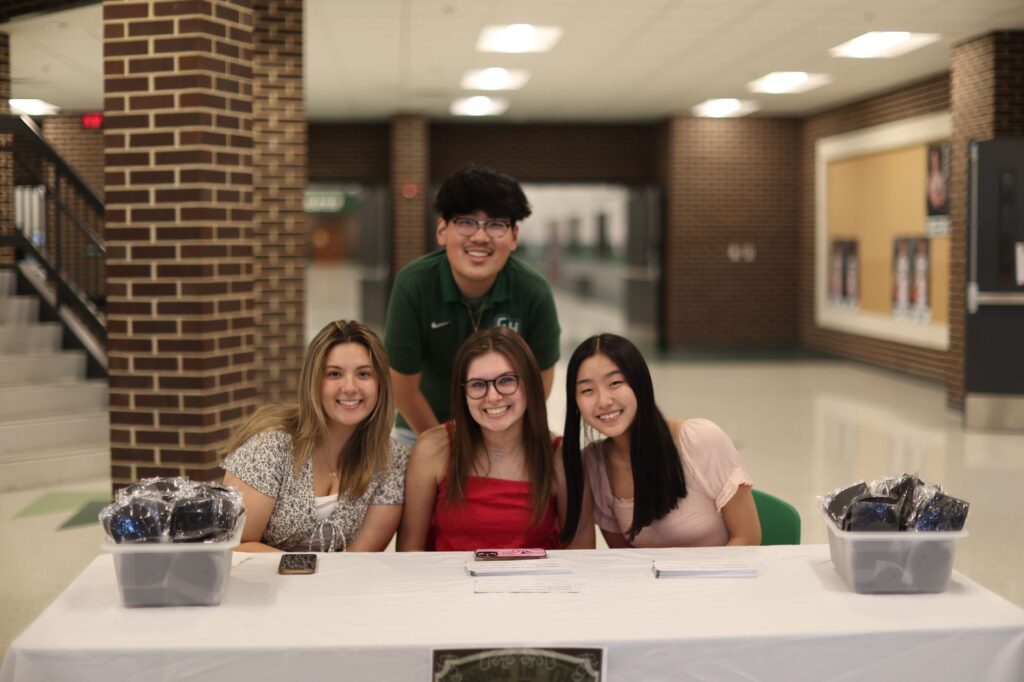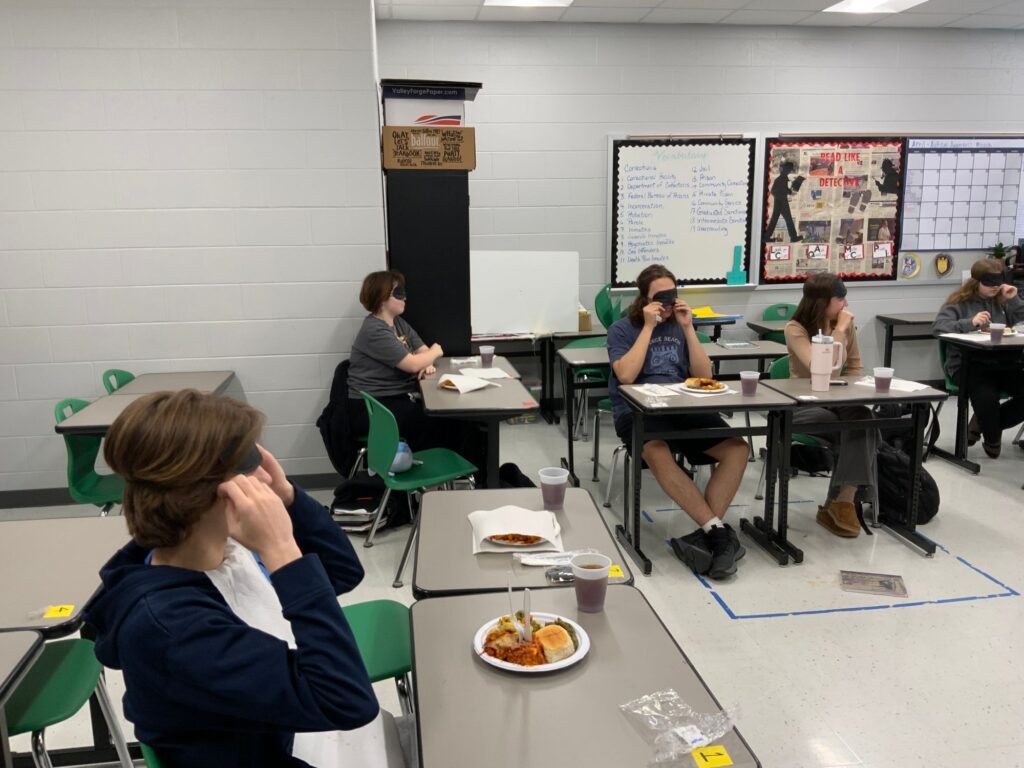Dining In the Dark allows a fully sighted person to briefly experience what it’s like to eat a meal without being able to see, something a blind person does on a daily basis.

Imagine being invited to a dinner party. You’re greeted by a group of friendly, well-dressed hosts at the main entrance who hand you a meal ticket and escort you to the dining area.
The first thing you notice is the blinds turned down and all the lights are dimmed. The food is served buffet-style and features a variety of delectable choices: salad, lasagna, tortellini, green beans and rolls.
After getting back to your seat, you are asked to put on a blindfold. Your meal will be eaten in total darkness.
This isn’t some bizarre dream or hallucination. It’s an event that takes a brief glimpse into the daily life of a blind individual.
Dining In the Dark allows a fully sighted person to briefly experience what it’s like to eat a meal without being able to see, something a blind person does on a daily basis. The concept first originated in Paris in the late 1990’s and has become a popular event with numerous blind organizations around the United States. Some utilize it as both a fundraising and awareness event, while others simply want to show how a blind person can live independently and perform the same daily tasks as anyone else.
Foreseeable Future Foundation CEO Griffin Pinkow recently connected with Victoria Croasmun, a CDC teacher at Green Hill (Tennessee) High School. Pinkow proposed a Dining In the Dark event to bring awareness to the school.
Croasmun has a couple of visually impaired students in her class. Their vision specialist recommended she get in touch with Foreseeable Future. After speaking with Pinkow, the idea of Dining In the Dark appealed to her.
“I was like, ‘that sounds so cool’,” recalled Croasmun, who earned a bachelor’s degree in comprehensive special education at Middle Tennessee State University and is in her second year at Green Hill. “That would be such a fun opportunity for the community to have some awareness about visual impairments and blindness.”
Croasmun is no stranger to people with disabilities. While in high school, she volunteered for the Down Syndrome Association of Middle Tennessee. During her senior year, she was offered a chance to take a class to be a peer student in a CDC classroom. She had a scholarship to attend art school, but the experience in that class changed the course of her life.

“I found my passion. In elementary school, I had a friend with cerebral palsy. So I’ve always been around the disability community. When I got in that (peer) class, that was my dream job.”
Dining In the Dark took place April 11 in the GHHS cafeteria and was open to students, parents and the community. Admission was free, but donation buckets were available if attendees wished to donate to the Foreseeable Future Foundation.
“We set it up to be an awareness event. I am so thankful for my principal who was on board with it. We really wanted it to be open to everybody who could come.”
Foreseeable Future provided funding for the food, which was catered by Ambrosia Catering in Nashville. The tables were covered with white cloths, and Foreseeable Future’s logo was projected on television screens around the cafeteria.

Each guest was given a meal ticket upon arrival, along with a blindfold. Once everyone was seated, Croasmun and Pinkow gave a short explanation of the event and what the participants could expect. After everyone got their food and were seated again, they were asked to put on a blindfold. Lights were dimmed and blinds closed to make the room completely dark.
Attendees were allowed to remove their blindfolds once they had finished eating.
“They got to look at their plate and the mess on the table. We went around and asked about their experience. We had a few people there who were visually impaired. After everybody got to eat, Griffin and I just said a few words and everybody hung out.”
Prior to the event, one of Green Hill High’s art students created a poster that was displayed around the school and on social media to spread the word. It was also promoted through the school’s news network and on Foreseeable Future’s social media pages.
Inclusion is an important aspect of Croasmun’s work. Experiences like Dining In the Dark go a long way to create awareness among the able-bodied community that people with disabilities can live productive lives.
“I firmly believe that we as a society and as a world need to be more inclusive of everybody. Here at Green Hill, I’m so glad to have the support of (administrators). I’ve put on a lot of inclusive events.”
Croasmun was intrigued by the reaction of participants, particularly while they were eating.
“People were really surprised about how heightened their senses were. They really used their hearing to try to hear where they put their silverware or were focused on tactile or touch. Everybody had a smile on their face and I’m so glad people found joy in that and everybody really dove into the experience.”
